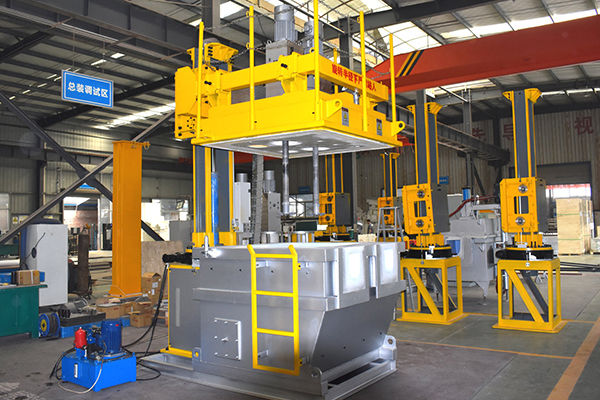Degassing System for Molten Aluminium uses a rotating rotor to break the inert gas (argon or nitrogen) blown into the liquid aluminum into a large number of dispersed bubbles, which are dispersed in the liquid aluminum.
Metal degassing depending on the principle of gas partial pressure difference and surface adsorption, the bubbles in the liquid aluminum absorb hydrogen in the liquid aluminum, adsorb oxidation slag, with the rise of the bubbles are carried out of the surface of the liquid aluminum, so that the liquid aluminum can be purified.
Because the bubbles are small and scattered, they are mixed evenly with the rotating molten liquid, and then they rotate slowly and rise in a spiral shape. When they are in contact with liquid aluminum, no continuous linear rising airflow is formed, thus significantly improving the purification effect.
Argon and nitrogen can be used as degassing and slagging gases for molten aluminum. The purity of the inert gas must be above 99.95%.

Degassing System for Molten Aluminium removes hydrogen and other residues (alkali metals, slag) contained in molten aluminum and its alloys that affect their quality and mechanical properties.
Aluminium, a lightweight metal used in electric vehicles and construction, makes up 36% of South32’s value chain. The company’s aluminum smelter uses their alumina, which is electrolytically converted into liquid aluminum.
South32 supports Eskom’s decarbonisation efforts by investing in more efficient factories and additional renewable energy infrastructure. It intends to work with the South African government, Eskom and other possible partners to find green energy.
Preliminary findings suggest that additional solar photovoltaic and wind capacity combined with battery storage may make renewable energy technically practical.
Hillside has the lowest carbon intensity compared to Mozal’s top quartile position and South32’s second quartile Alumar aluminium smelter in Brazil, which will be driven by long-term cost-effective renewable electricity.
The Richards Bay aluminium smelter is already conducting trials of energy-saving technologies, with a feasibility assessment and final investment decision likely to take place this financial year. AP3XLE technology is already in use at Mozal Aluminium, a South32 company in Mozambique.
Alternative processing technologies, such as inert anodes, are being developed to produce carbon-free aluminium smelting. The consumption of carbon anodes in the smelting process accounts for the majority of Scope 1 emissions. The commercialization of alternative processing methods, such as inert anodes or other technological advancements, will be required to achieve net zero operational carbon emissions in the aluminium industry.

